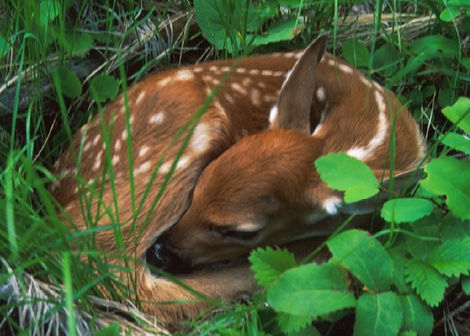
Whitetail fawns are usually born in May or June, but sometimes into July at southern latitudes. White-tailed fawns weight 6 to 8 pounds at birth. Fawns spend their early days clinging to their mothers, bonding and learning about the big new world. Sometimes does and their offspring gather in small groups. And, it’s within these groups fawns learn to walk, run and react in the face of danger. Fawns are playful and get exercise by nudging, jumping and boxing one another with their legs and feet.
The first few days and weeks are perilous for fawns. They survive best in areas with lots of cover. Fawns rely heavily on their natural camouflage. The white spots scattered across their reddish-brown bodies blend well with fallen leaves and brush. When a fawn beds down, they tuck their legs, head and neck into its body for ultimate concealment and remains motionless. This helps avoid predation by bobcats, coyotes, or anything else.
At just about the time a fawn is weaned, it loses its spotted coat. It then sports grayish hair that mixes well with the deciduous forest. In winter, a fawn’s coat is gray with reddish-brown tips. A male fawn’s face grows darker while his belly remains white.